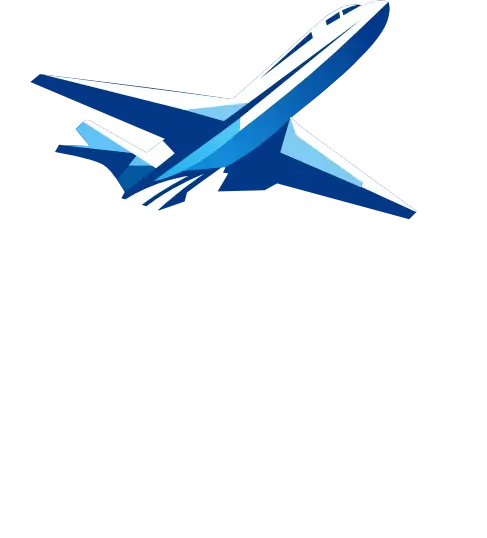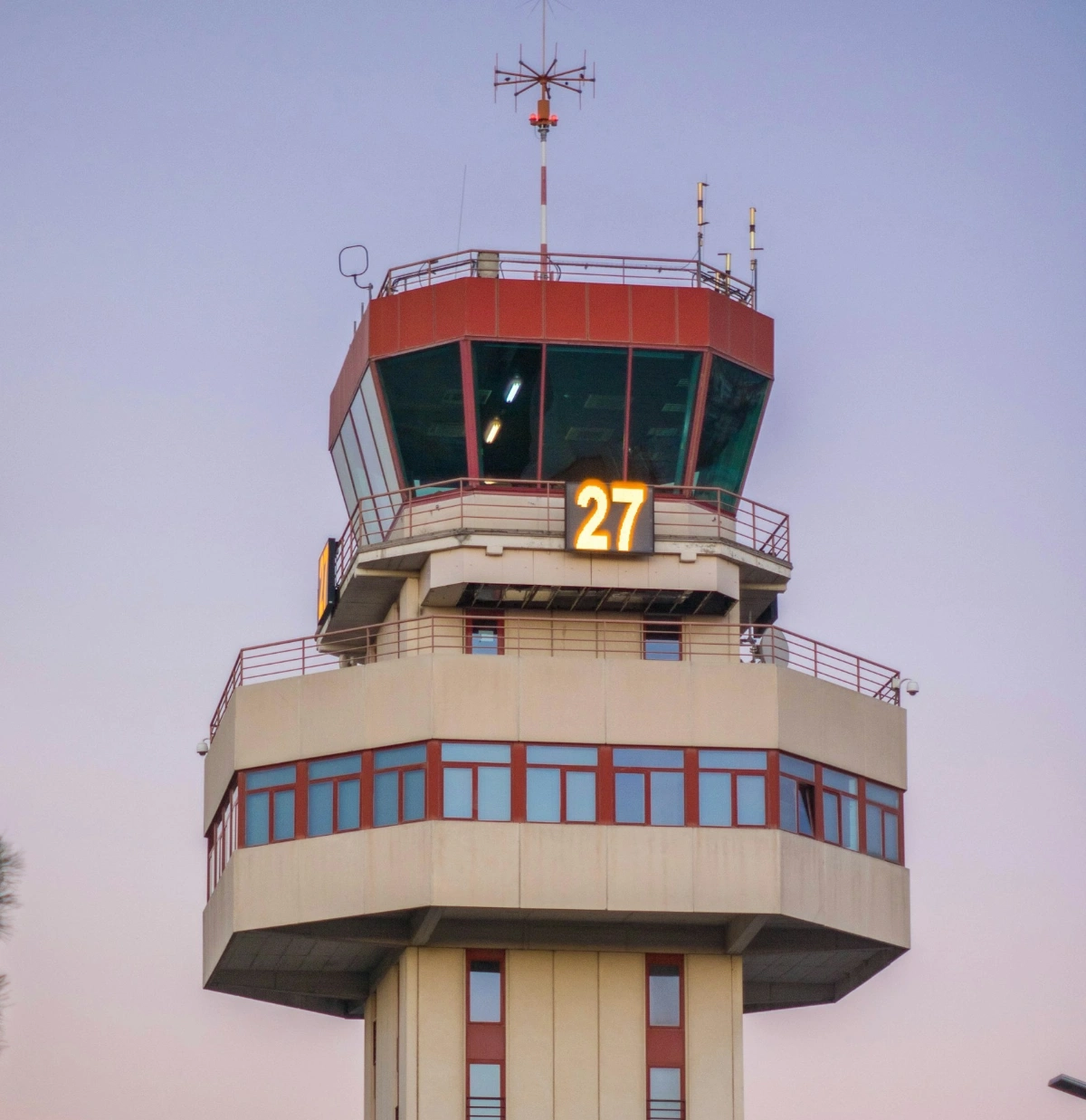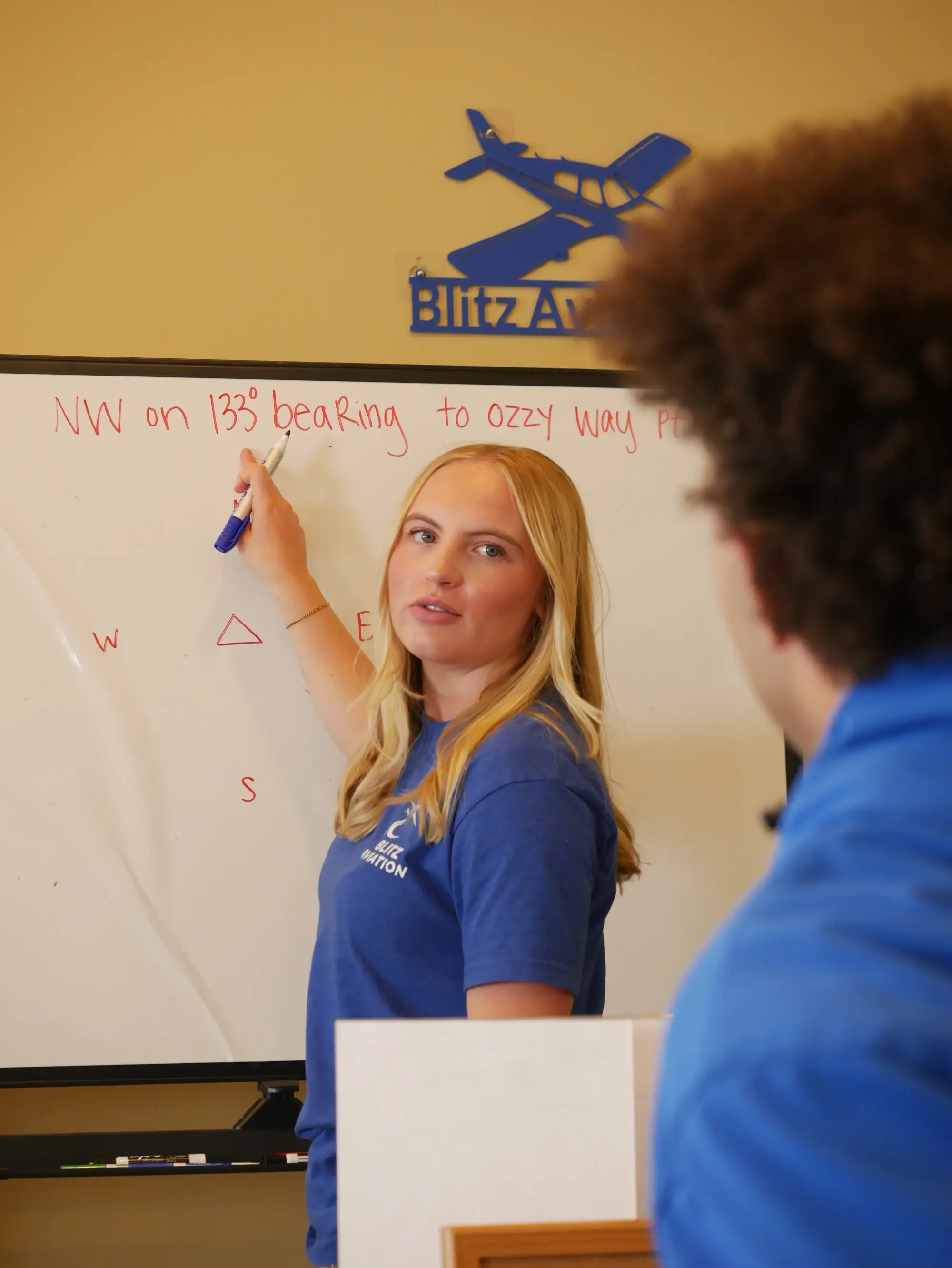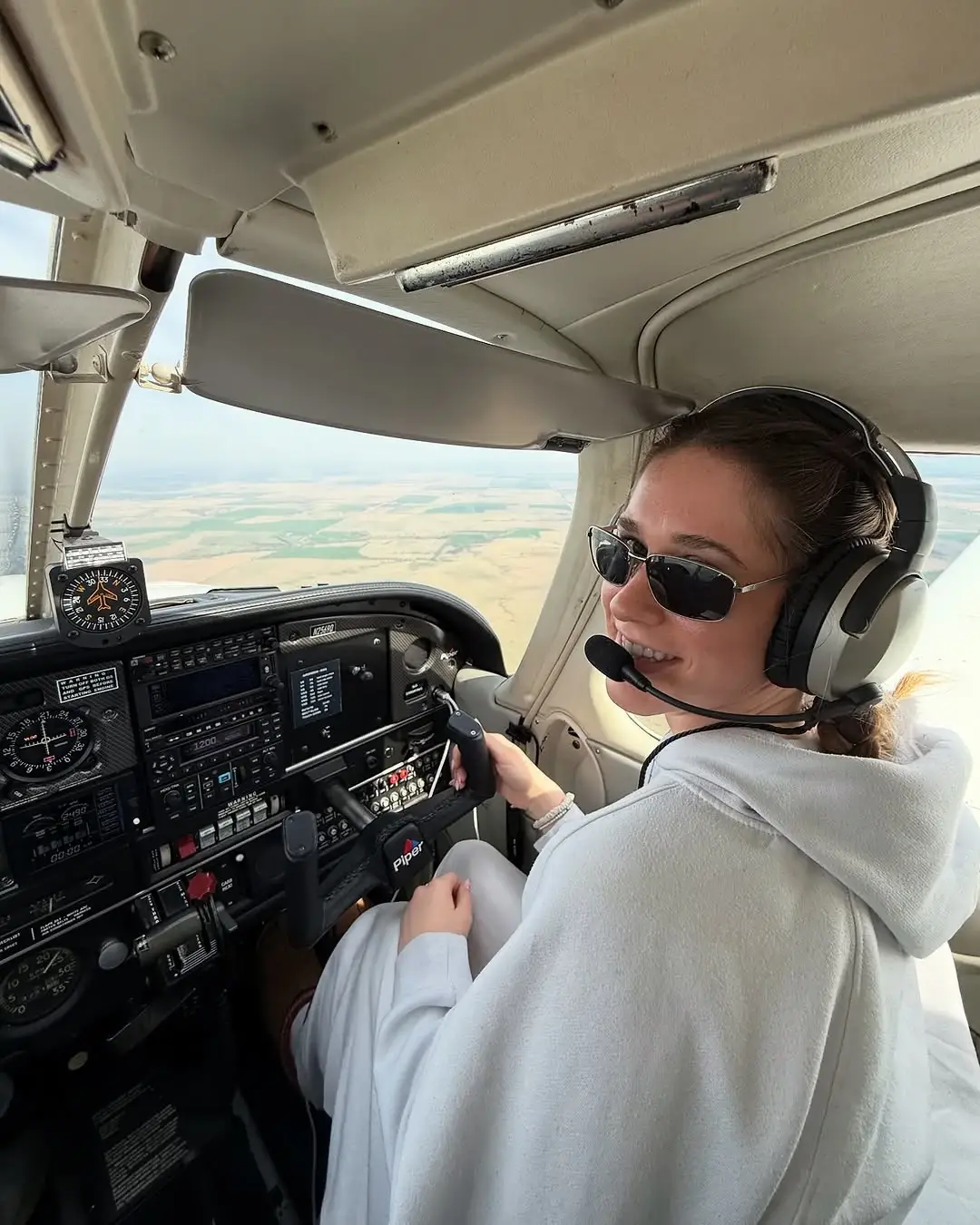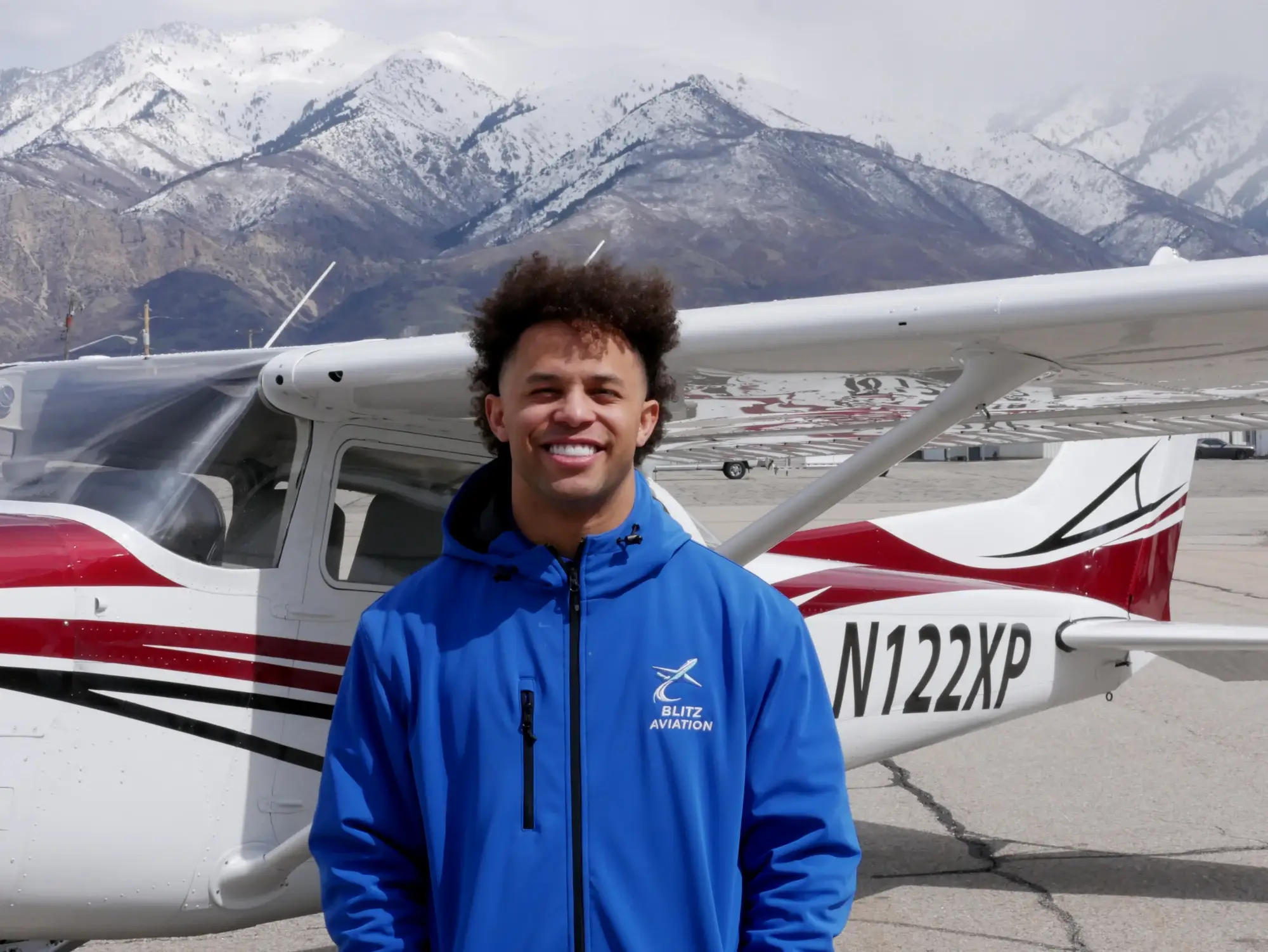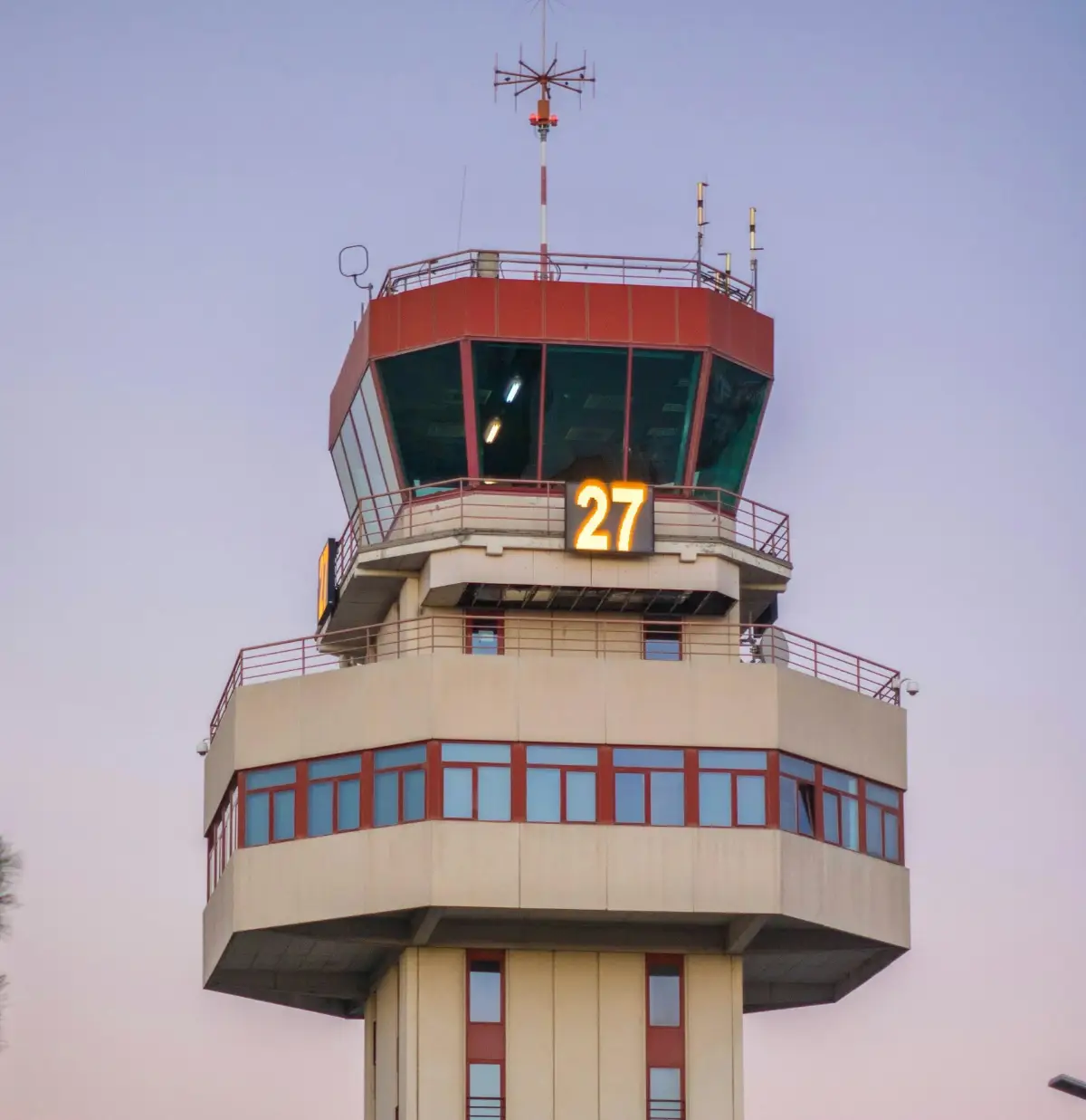
Master ATC Communications: Your Complete Guide to Confident Radio Skills
Unlock the secrets to effective air traffic control communication with our comprehensive guide. Perfect your radio skills and boost your confidence in the cockpit.
“Cessna 123AB, turn left heading 270, descend and maintain 3,000, contact approach 119.4.”
Did that transmission make your palms sweat? You’re not alone. For many student pilots, the thought of talking on the radio triggers more anxiety than their first solo flight. But here’s the secret: ATC communication isn’t about memorizing a script, it’s about mastering a conversation that keeps everyone safe in the sky.
At Blitz Aviation, we’ve watched thousands of nervous student pilots transform into confident aviators who handle radio communications with ease. The difference? Understanding that every transmission is part of a larger dialogue designed to keep you safe, informed, and flying smoothly.
Why Radio Skills Can Make or Break Your Flying Career
Picture this: You’re on final approach to a busy airport when the controller issues a last-minute runway change. Your ability to acknowledge, understand, and execute that instruction isn’t just about following rules, it’s about demonstrating the professional competence that separates skilled pilots from those who merely hold certificates.
Effective ATC communication serves three critical functions:
Safety First: Every radio call is a safety net. When you announce your position in the pattern or acknowledge a clearance, you’re participating in a system that prevents mid-air collisions and runway incursions. Poor communication isn’t just embarrassing, it’s dangerous.
Operational Efficiency: Controllers move hundreds of aircraft daily through complex airspace. Clear, concise communication keeps traffic flowing smoothly and reduces delays for everyone. When you speak professionally, you’re contributing to the entire system’s efficiency.
Professional Credibility: Your radio voice is often your first impression in aviation. Airlines, charter operators, and even flying clubs notice pilots who communicate well. It’s a skill that opens doors throughout your aviation career.
Demystifying the Radio: It’s All About Structure
The beauty of ATC communication lies in its predictability. Unlike casual conversation, every radio transmission follows a logical structure that, once learned, becomes as automatic as your pre-flight checklist.
The Four-Part Formula That Never Fails
Every effective radio call contains four essential elements:
- Who you’re calling (the recipient)
- Who you are (your aircraft identification)
- Where you are (your position or location)
- What you want (your request or intention)
Example: “Ogden Tower, Cessna 8-2-3-Alpha-Bravo, runway 3, ready for takeoff.”
This structure works whether you’re talking to a control tower, making position reports at a non-towered airport, or calling flight service for a weather briefing.
Beyond the Basics: Advanced Communication Strategies
As you progress, you’ll encounter more complex scenarios that require nuanced communication skills:
Frequency Congestion: When the airwaves are busy, timing becomes crucial. Listen for natural breaks, keep transmissions brief, and be ready to wait your turn.
Emergency Procedures: In unusual situations, clear communication becomes even more critical. The phrase “Pan-pan” or “Mayday” immediately alerts controllers to prioritize your transmission.
International Operations: If you plan to fly internationally, learning ICAO phraseology and understanding different accent patterns will serve you well.
Your KOGD Communication Roadmap
Training at Ogden-Hinckley Airport gives you exposure to a perfect mix of controlled and uncontrolled airspace operations. Here’s your frequency guide:
Controlled Airspace Operations
- ATIS (127.775): Your pre-flight information source for weather, active runways, and NOTAMs
- Ground Control (121.9): Your taxi clearance authority from parking to runway
- Tower (120.3): Your takeoff, landing, and pattern work coordinator
- Departure/Approach (124.0): Your transition guide for entering and leaving Class D airspace
Uncontrolled Airspace Communications
- CTAF (122.8): Your self-announce frequency for position reports and traffic advisories
Pro Tip: Always monitor the appropriate frequency for several minutes before making your first transmission. This gives you a feel for the current traffic situation and the controller’s communication style.
The Art of Professional Radio Technique
Technical knowledge only gets you halfway to communication excellence. The other half involves developing the vocal skills and mental habits that mark professional pilots.
Voice and Delivery Mastery
Pace and Clarity: Speak as if you’re explaining something important to a friend. Not so fast that you’re rushing, not so slow that you’re wasting time. Controllers appreciate pilots who speak at a conversational pace with clear enunciation.
Microphone Technique: Hold the mic about an inch from your mouth, slightly off to one side. This prevents breathing sounds while ensuring clear transmission. Always pause briefly before speaking to avoid cutting off the first word.
Confidence Building: Even if you’re nervous, project confidence through your voice. Controllers respond better to pilots who sound sure of themselves, and other pilots take notice too.
Standard Phraseology: Your Professional Vocabulary
Aviation has its own language for good reason. Standard phraseology eliminates ambiguity and ensures everyone understands exactly what’s being communicated.
Replace casual words with standard terms:
- “Yes” becomes “Affirmative”
- “No” becomes “Negative”
- “I understand” becomes “Roger”
- “I will do that” becomes “Wilco”
- “Please repeat” becomes “Say again”
Number pronunciation matters:
- “Three” becomes “Tree”
- “Five” becomes “Fife”
- “Nine” becomes “Niner”
These seemingly small details contribute to your professional image and reduce the chance of miscommunication.
Building Skills That Last: Your Practice Roadmap
At Blitz Aviation, we believe radio proficiency develops through deliberate practice and gradual exposure to increasingly complex scenarios. Here’s how to accelerate your learning:
Ground-Based Practice Tools
LiveATC.net: This free resource lets you listen to real ATC communications from airports worldwide. Start with quieter airports and gradually work up to busier facilities. Listen for patterns in how controllers phrase instructions and how pilots respond.
Chair Flying: Before every lesson, sit in a quiet place and mentally rehearse your entire flight. Include every radio call you’ll make, from requesting taxi clearance to announcing your position in the pattern.
Mobile Apps: Apps like PlaneEnglish, ATC Sim, and PilotEdge provide interactive practice environments where you can make mistakes without consequences.
In-Flight Skill Development
Start Simple: Your first radio calls should be in low-stress environments. Practice making position reports on CTAF before tackling busy controlled airports. Our discovery flights are perfect for this initial exposure.
Build Complexity Gradually: As your confidence grows, seek out opportunities to practice in more challenging environments. Request flight following, practice instrument approaches, or visit airports with different types of airspace.
Learn from Every Flight: After each lesson, discuss any radio communications that felt awkward or unclear. Your certified flight instructor can provide specific feedback and suggest improvements.
Common Mistakes and How to Avoid Them
Even experienced pilots occasionally stumble with radio communications. Here are the most common mistakes and proven strategies to avoid them:
The “Uh” Epidemic
Problem: Filling air time with “uh,” “um,” or nervous laughter
Solution: Plan your transmission before keying the mic. Write down complex clearances or requests if necessary.
Information Overload
Problem: Trying to communicate too much information in one transmission
Solution: Break complex messages into smaller, logical chunks. Controllers prefer two clear transmissions over one confusing one.
The Silent Treatment
Problem: Failing to acknowledge clearances or instructions
Solution: Always acknowledge every transmission with your call sign and a brief confirmation of what you understand.
Call Sign Confusion
Problem: Using incorrect or inconsistent aircraft identification
Solution: Write your full call sign on your kneeboard and use it consistently throughout your flight.
From Student to Professional: Your Communication Journey
The path from nervous student to confident communicator follows a predictable pattern. Understanding this progression helps you set realistic expectations and celebrate your improvements.
Phase 1: Survival Mode (First 10 hours)
You’re focused on basic survival, getting your message across without major embarrassment. Every transmission feels like a test, and you’re constantly worried about making mistakes.
Phase 2: Building Confidence (10-40 hours)
You start recognizing patterns in ATC communications and can handle routine transmissions without panic. You’re beginning to understand the logic behind different types of clearances.
Phase 3: Developing Fluency (40-100 hours)
Radio work becomes more natural. You can handle non-routine situations and complex clearances without becoming flustered. You’re starting to sound like a pilot.
Phase 4: Professional Competence (100+ hours)
Communication becomes seamless. You can handle any normal ATC interaction with confidence and even help newer pilots understand complex situations.
Your Next Steps: Putting Knowledge Into Action
Reading about radio communications is like studying swimming techniques, useful, but no substitute for getting in the water. The real learning happens when you key that mic and start talking.
At Blitz Aviation, we integrate radio training into every lesson from day one. Our experienced instructors don’t just teach you what to say, they help you understand why certain phrases work better than others and how to adapt your communication style to different situations.
We also provide resources that extend your learning beyond the cockpit:
- Personalized coaching on specific communication challenges
- Practice scenarios that simulate real-world situations through our ground school programs
- Progressive exposure to increasingly complex airspace
- Feedback sessions that help you identify areas for improvement
The Confidence Connection: Why This Matters
Here’s something most flight schools won’t tell you: Your radio skills directly impact your overall piloting confidence. When you can communicate clearly and professionally, you feel more in control of your flying environment. That confidence translates into better decision-making, improved situational awareness, and more enjoyable flights.
Controllers notice confident pilots. They’re more likely to approve route requests, provide helpful traffic information, and accommodate special needs. Your professional communication style opens doors to opportunities throughout your aviation career.
Ready to Master the Airwaves?
Remember, every airline captain, every military pilot, and every aviation professional started exactly where you are now, wondering if they’d ever sound like they belong on the radio. The difference between those who succeed and those who struggle isn’t natural talent, it’s commitment to deliberate practice and quality instruction.
ATC controllers aren’t there to judge you; they’re there to help you fly safely and efficiently. Every transmission is an opportunity to improve, and every flight is a chance to build the skills that will serve you throughout your aviation career.
Don’t let radio anxiety hold back your flying dreams. With proper instruction, consistent practice, and the right mindset, you’ll soon discover that talking on the radio isn’t just a necessary skill, it’s one of the most satisfying aspects of being a pilot.
Ready to start your journey to radio confidence? Your first lesson is just a phone call away. At Blitz Aviation, we’re committed to helping you develop not just the technical skills to be a safe pilot, but the communication skills to be a professional one.
Ready to experience the difference that expert instruction makes? Schedule your discovery flight today and discover why our students consistently rank among the most confident, professional pilots in the region. Your aviation career starts with a single transmission, make it a good one.
Learn More About Blitz Aviation:
- Discovery Flights - Perfect for first-time flyers
- Private Pilot Training - Comprehensive pilot certification programs
- Aircraft Rental - Well-maintained fleet for training and beyond
- Meet Our Instructors - Learn from experienced, professional pilots
- Contact Us - Ready to start your aviation journey?
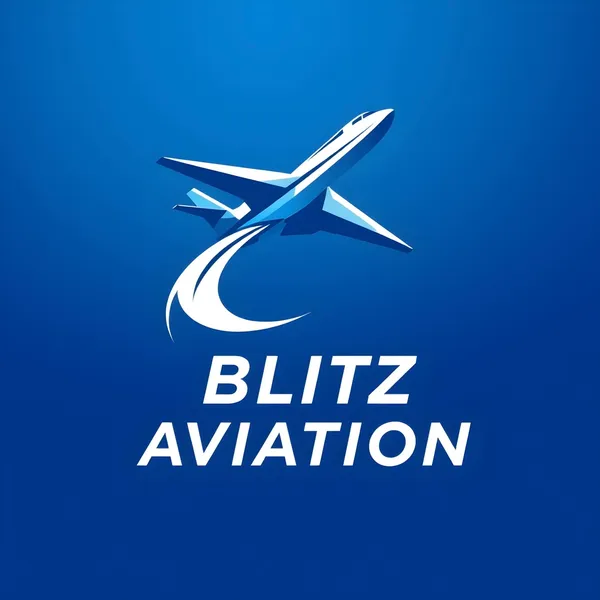
Blitz Aviation
Professional flight training school in Ogden, Utah, specializing in accelerated pilot programs. Get your pilot license faster with our experienced instructors and modern fleet.
